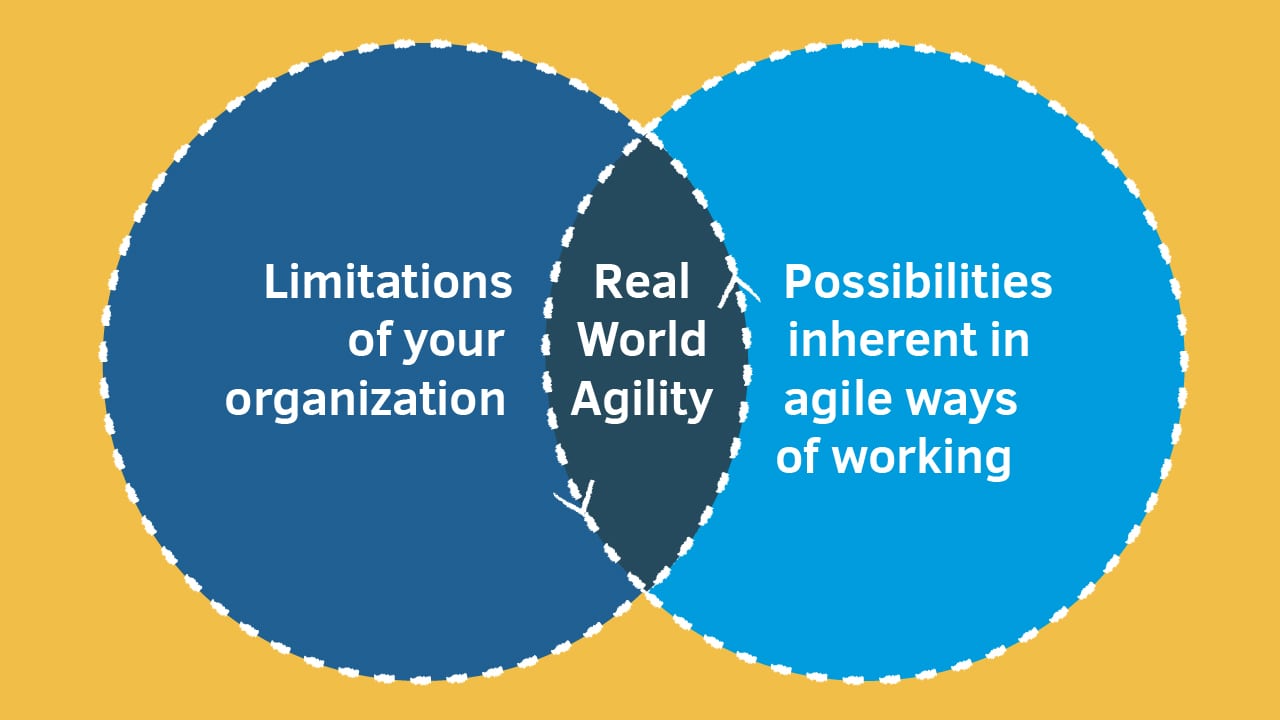Learn about purchasing for teams

It is often said, if you’re not agile, you’re fragile. Companies that cannot respond quickly to economic shocks, market changes and world events risk becoming irrelevant or, worse, extinct.
So it’s no wonder agile roles are in demand. Scrum Master skills were mentioned in nearly 66,000 job postings in the U.S. during the past 12 months and according to Indeed.com, Scrum Master certifications - specifically the Certified ScrumMaster® - were the 9th most-requested certification in 2020.
Likewise, The World Economic Forum’s Jobs of Tomorrow: Mapping Opportunity in the New Economy placed Agile Coach at #3.
Agile principles help companies adapt to rapid change across all industries, no matter the size of the company. For agile to succeed, rigid operations or a constrained approach to decision-making must be consigned to the past.
That doesn’t mean it is easy to make the shift. Agility is not a buzzword or tick box exercise. There is no quick fix or three-step process to get you there overnight. It might seem easy to embed Scrum frameworks into a random department or two and think “job done”, but that won’t work in practice. To achieve a state of agility, the ethos behind it, and the processes to achieve it, must be embedded throughout an organization.
The barriers to achieving agility
There are many reasons why companies struggle to adopt agility. The 2022 State of Agile Coaching Report - created by Scrum Alliance, The Business Agility Institute, and IC Agile - identified several key barriers. These included resistance to change, leadership difficulty, a lack of commitment, poor practices, unsuitable structures, no clear vision, and not enough skilled personnel.
Countless companies seek to “become agile” as a means to speed up production. But operationally, agility isn't just about moving faster; it is about being intentional in simplifying and streamlining processes to move more fluidly from reaction to response.
There is a lack of understanding of the hard work and effort required to become a more agile company. Misinformation plays its part too; many think implementing one or two classroom learnings in silos is enough to deliver on the goals of agile.
In reality, agility takes time, patience, and an understanding of the sometimes immovable obstacles that stand in the way of progress. What makes perfect sense or seems doable during a scrum training class may be confusing or even impossible to achieve in an individual’s workplace.
What makes perfect sense or seems doable during a scrum training class may be confusing or even impossible to achieve in an individual’s workplace.
That’s where the idea of real-world agility comes in. Real-world agility is understanding both the limitations of your organization and the possibilities inherent in agile ways of working.
Being agile in the real world means finding what works for you within the context of your organization. It means inspecting and adapting your agile practices while identifying opportunities for internal improvement. It means living with the creative tension between by-the-book agility and real-world practicalities, in order to unlock the potential of your organization and its products and services.
Creating agile changemakers
You must also appreciate how individuals will sometimes understand a company’s problems, and the solutions, better than its leaders. This understanding is what drives change makers, those who dare to imagine new realities.
Imagination alone, however, doesn’t create change. For agility to succeed, everyone’s buy-in is critical. That’s why, alongside the learning, it is crucial to equip your people with the additional tools and skills needed to define new ways of working and to chip away at - or even completely eliminate - the status quo.
Many companies have found success with designated “agile champions”, individuals identified as drivers of change. These individuals could be executives or even empowered agile coaches or scrum masters. Agile champions detail exactly what agile means for their organization and coordinate who internally takes responsibility for it.

5 Keys to Succeeding with Real-World Agility
-
Identify a tangible goal - Don’t just follow a trend. Address the specifics of what becoming agile would achieve or what problems it would help you solve. For example, you’re struggling to adapt to changes in demand, moving to being customer-centric or reducing waste. Every company has a need; you must first identify it.
-
Back your agile changemaker - agile takes time to filter through an organization. Whether your changemaker is an individual, a team or a department, they must have the C-suite’s backing to implement agility and see it through. You can’t just change a few behaviors here and there. It must be comprehensive, and the entire organization must be encouraged to engage and adapt.
-
Stay the agile course - even if your team structure varies from that listed in the Scrum Guide, or the company you work for is slow to change, remind everyone that no matter their role, they can make an impact.
-
Utilize available resources - attend agile events and user groups, read articles, watch videos, and consult your peers. There is a large community of agilists who are willing to lend an ear and offer advice to help you in transforming the world of work.
-
Find expert help - coaches, trainers, educators, and consultants can assist with every aspect of an organization’s journey toward agility. Agile coaches can help with company-wide barriers. Trainers and certifications can equip your change makers with the tools they need to succeed.
For agility to take hold, your changemakers must have all the resources available, from the funding to grow in their skill set to the time needed to prove the impact on all individuals and processes in the business. At Scrum Alliance, we offer access to agile coaches and trainers, individual certifications, and tips and tools to help people and organizations thrive in their agile journeys.
The unprecedented scale and pace of change we are now experiencing makes agility a requirement; first to survive, and then to continue to thrive. That kind of transformation can be daunting.
The unprecedented scale and pace of change we are now experiencing makes agility a requirement; first to survive, and then to continue to thrive. That kind of transformation can be daunting. A new breed of company is emerging, one that can reinvent itself every single day. All it takes to get started is a leader brave enough to take that first step.
This article originally appeared in The Times of London - Raconteur special Agile Business edition

Read the Full Report and Get the Tools You Need to Advance Real-World Agility.










